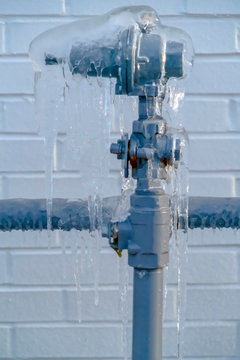Essential Advice for Preventing Frozen Pipes in Cold Weather Conditions
Essential Advice for Preventing Frozen Pipes in Cold Weather Conditions
Blog Article
On this page on the next paragraphs you can discover a lot of sound ideas involving How To Avoid Freezing Pipes.

Winter can wreak havoc on your pipes, especially by freezing pipelines. Right here's just how to stop it from occurring and what to do if it does.
Introduction
As temperature levels drop, the danger of icy pipelines increases, possibly resulting in costly repair services and water damage. Comprehending exactly how to avoid frozen pipelines is crucial for house owners in cool environments.
Recognizing Frozen Pipelines
What triggers pipelines to freeze?
Pipelines freeze when exposed to temperature levels below 32 ° F (0 ° C) for extended periods. As water inside the pipelines ices up, it broadens, taxing the pipe walls and possibly causing them to rupture.
Threats and problems
Frozen pipelines can result in water supply disruptions, property damage, and expensive fixings. Ruptured pipelines can flood homes and trigger substantial structural damage.
Indicators of Frozen Water Lines
Determining frozen pipelines early can prevent them from rupturing.
How to recognize frozen pipes
Search for lowered water circulation from taps, uncommon odors or noises from pipelines, and noticeable frost on exposed pipes.
Prevention Tips
Shielding vulnerable pipes
Wrap pipes in insulation sleeves or utilize warm tape to shield them from freezing temperature levels. Concentrate on pipes in unheated or outside areas of the home.
Home heating strategies
Maintain interior spaces appropriately heated, especially areas with pipes. Open up closet doors to enable cozy air to distribute around pipes under sinks.
Shielding Outdoor Plumbing
Yard hose pipes and outdoor taps
Detach and drain pipes garden tubes before wintertime. Mount frost-proof spigots or cover outdoor taps with shielded caps.
What to Do If Your Pipes Freeze
Immediate actions to take
If you presume frozen pipelines, maintain faucets open up to alleviate pressure as the ice thaws. Use a hairdryer or towels taken in warm water to thaw pipelines slowly.
Long-Term Solutions
Structural modifications
Take into consideration rerouting pipelines far from outside wall surfaces or unheated locations. Add additional insulation to attic rooms, cellars, and crawl spaces.
Upgrading insulation
Invest in premium insulation for pipelines, attics, and walls. Proper insulation helps maintain regular temperature levels and lowers the threat of icy pipelines.
Conclusion
Stopping icy pipelines needs proactive actions and quick actions. By understanding the reasons, signs, and safety nets, home owners can protect their pipes during cold weather.
5 Ways to Prevent Frozen Pipes
Drain Outdoor Faucets and Disconnect Hoses
First, close the shut-off valve that controls the flow of water in the pipe to your outdoor faucet. Then, head outside to disconnect and drain your hose and open the outdoor faucet to allow the water to completely drain out of the line. Turn off the faucet when done. Finally, head back to the shut-off valve and drain the remaining water inside the pipe into a bucket or container. Additionally, if you have a home irrigation system, you should consider hiring an expert to clear the system of water each year.
Insulate Pipes
One of the best and most cost-effective methods for preventing frozen water pipes is to wrap your pipes with insulation. This is especially important for areas in your home that aren’t exposed to heat, such as an attic. We suggest using foam sleeves, which can typically be found at your local hardware store.
Keep Heat Running at 65
Your pipes are located inside your walls, and the temperature there is much colder than the rest of the house. To prevent your pipes from freezing, The Insurance Information Institute suggests that you keep your home heated to at least 65 degrees, even when traveling. You may want to invest in smart devices that can keep an eye on the temperature in your home while you’re away.
Leave Water Dripping
Moving water — even a small trickle — can prevent ice from forming inside your pipes. When freezing temps are imminent, start a drip of water from all faucets that serve exposed pipes. Leaving a few faucets running will also help relieve pressure inside the pipes and help prevent a rupture if the water inside freezes.
Open Cupboard Doors
Warm your kitchen and bathroom pipes by opening cupboards and vanities. You should also leave your interior doors ajar to help warm air circulate evenly throughout your home.

As an enthusiastic person who reads on Winter Plumbing Precautions: Preventing Frozen Pipes, I figured sharing that information was a great idea. Sharing is nice. You just don't know, you could be helping someone out. Thank you for going through it.
Call Today Report this page